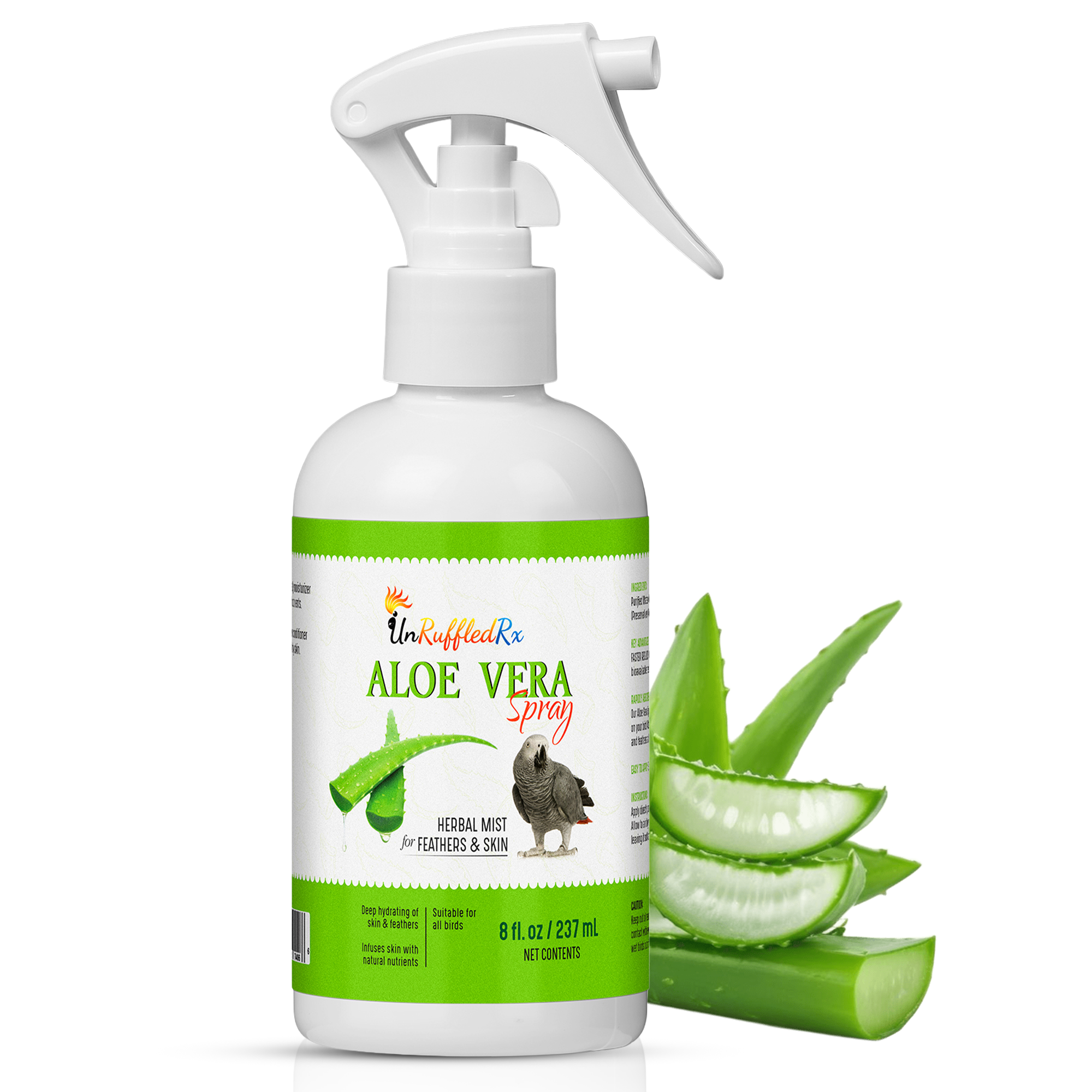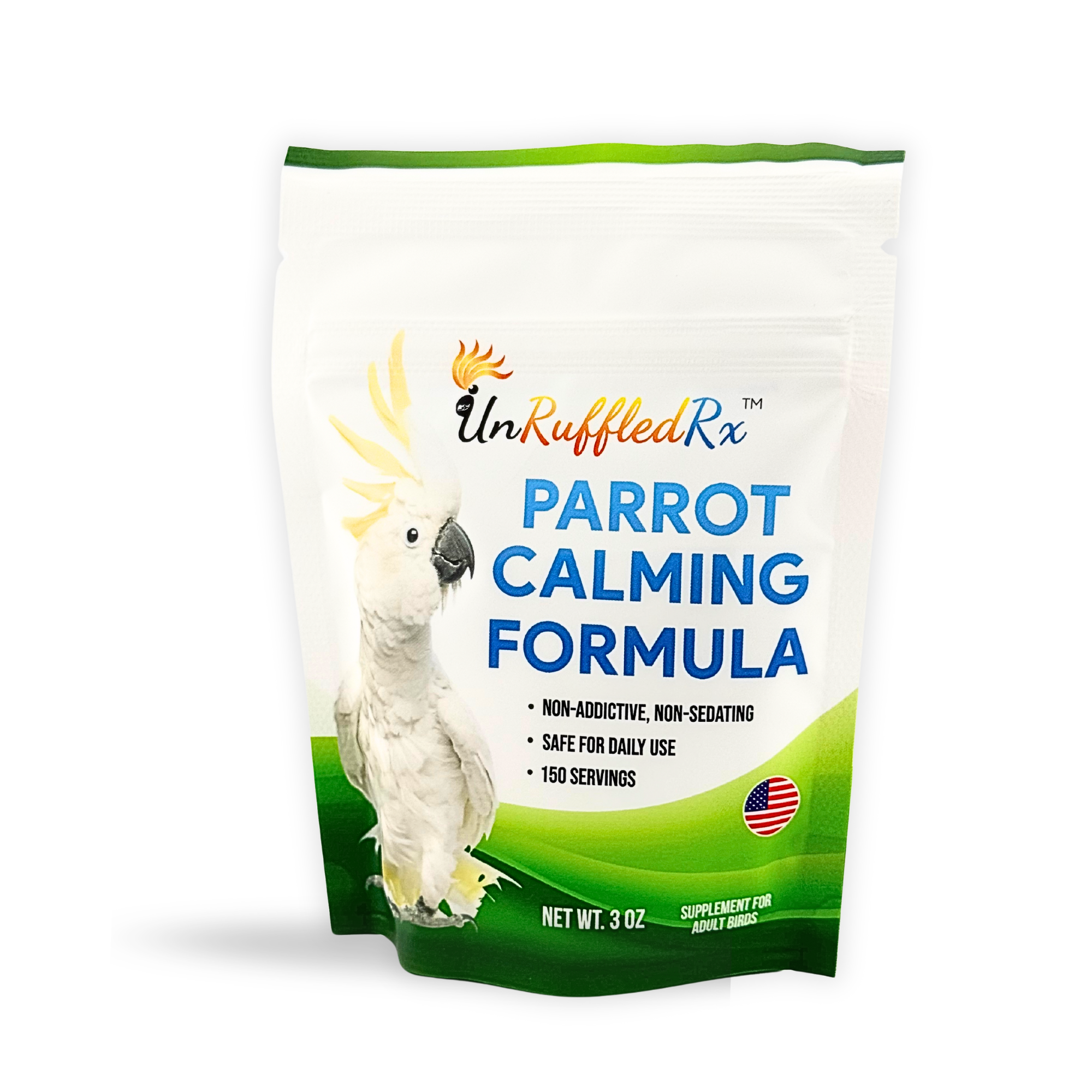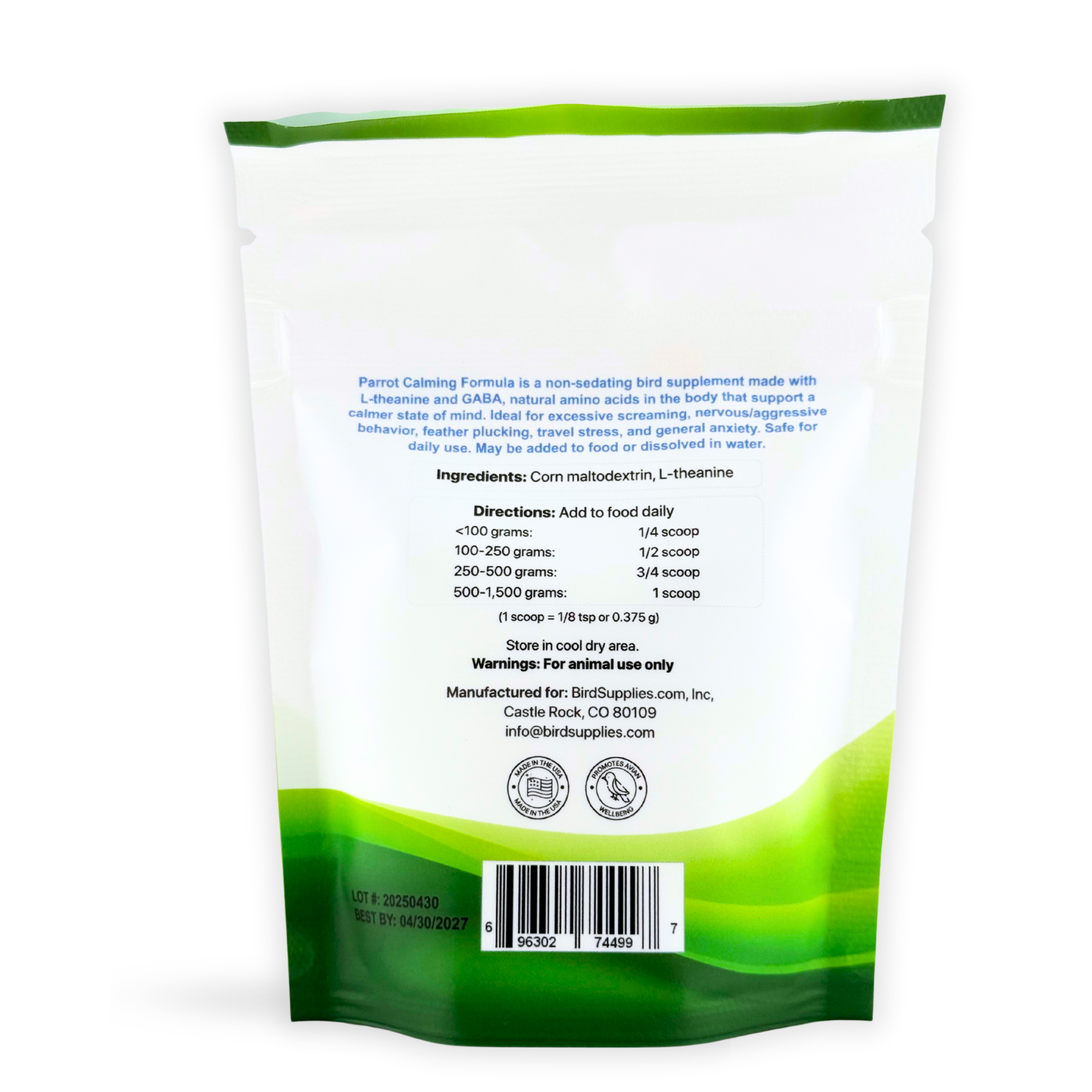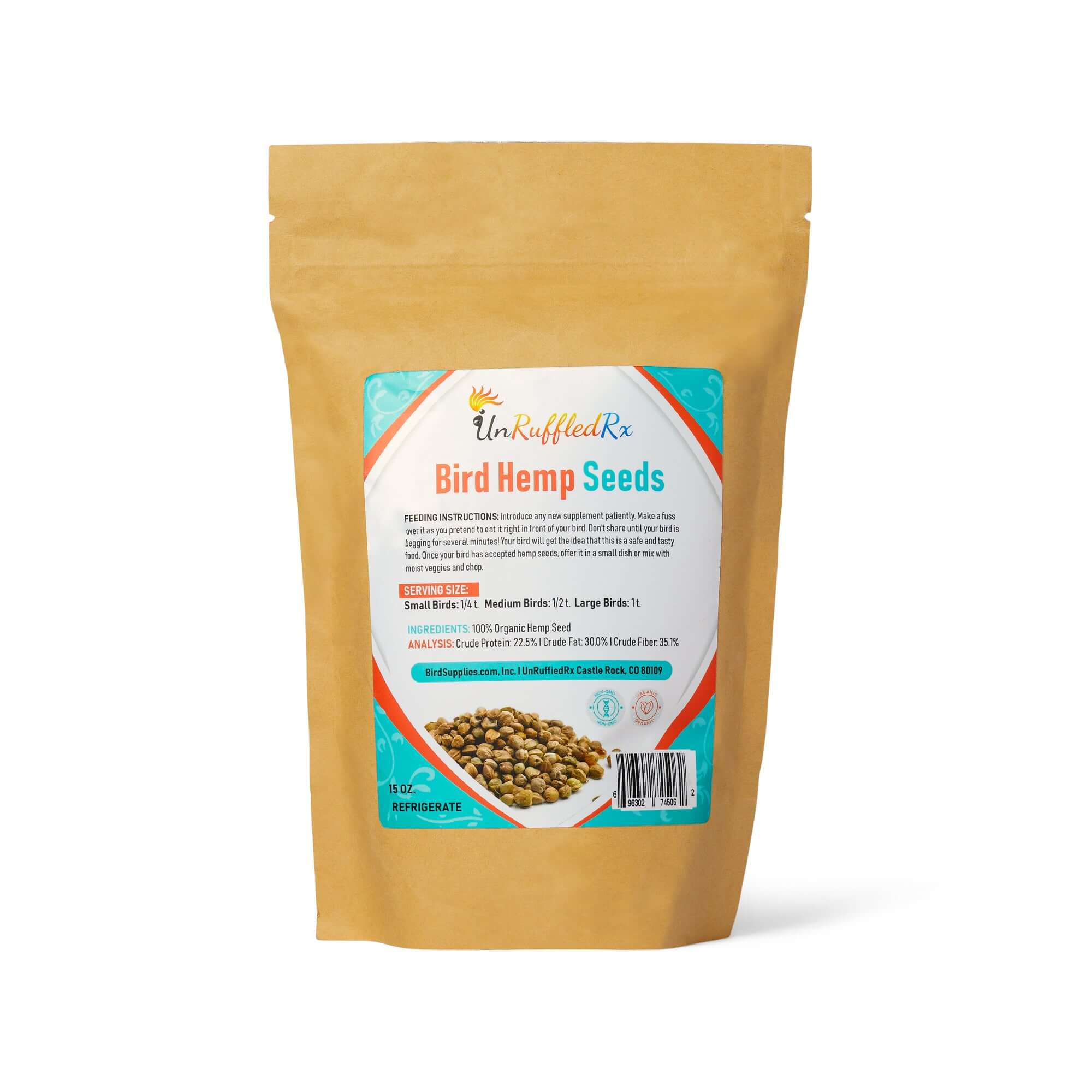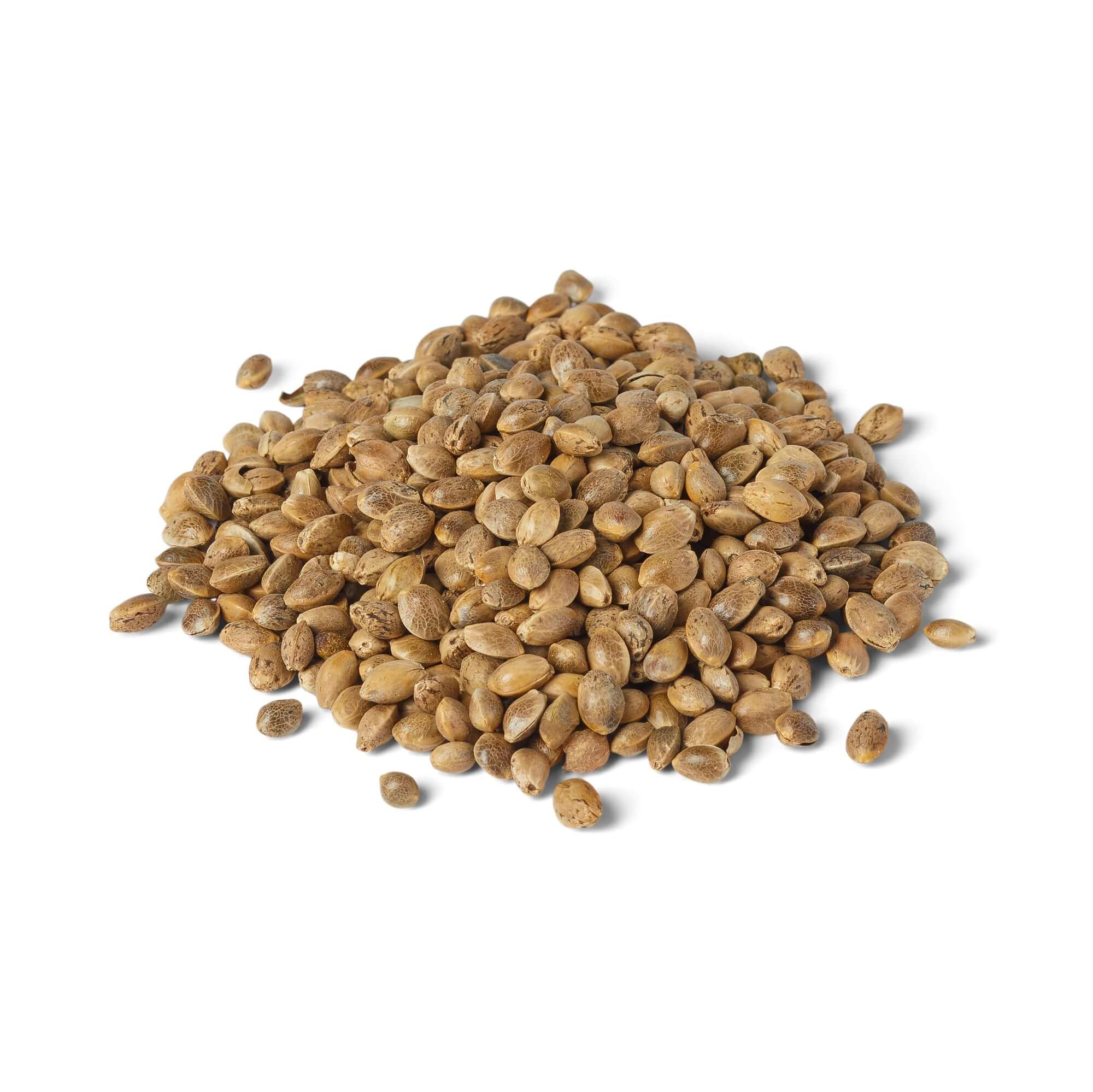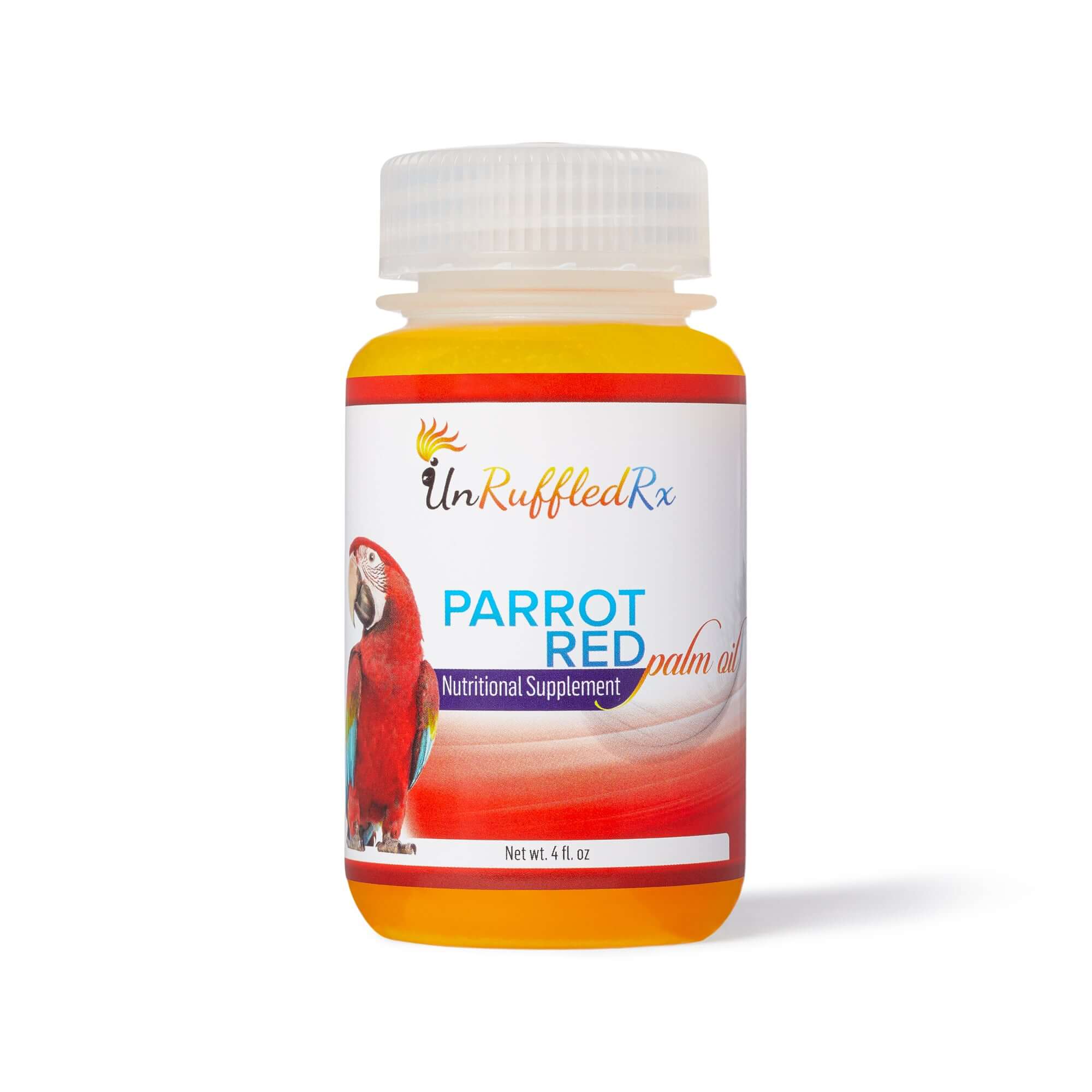Natural Bird-Safe Pest Control for Bird Lovers
- The Most Common Pests: Nuisance vs. Safety Issues
- Pest Free Bird Room Setup
- Hot Tip for Apartment Dwellers
- FAQ Bird Safe Pest Control
Bird seed moths driving you crazy? You’re not alone! These little pests love to sneak into your bird food and take over your space if your bird room setup isn't just right. And don’t even get me started on ants or mice — those little guys can really mess things up if you’re not careful. But don’t worry, dealing with that s*#t 💩 doesn’t have to be complicated. In this blog, we’re diving into simple, bird-safe solutions to stop these pesky invaders before they turn your space upside down. Read on to learn how to tweak your setup, store food properly, and kick pests out for good!
The Most Common Pests: Nuisance vs. Safety Issues
In any bird room, pests are more than just an inconvenience — they can mess with your bird’s health and happiness. Seed predators like moths, ants, and mice are some of the most common culprits, sneaking into bird food and turning your carefully set-up space into a pest playground. While moths can ruin your bird’s food, ants and mice bring their own problems, like contamination and disease.
But these aren’t the only pests you need to watch out for. Roaches, beetles, and weevils can also invade your bird room, wreaking havoc on your bird’s food supply and potentially spreading bacteria. Whether it’s the usual suspects or more sneaky intruders, it’s crucial to stay ahead of the game and keep your bird’s space pest-free. In this post, we’ll dive into how to handle these pests before they take over!
Bird Seed Moths

Nuisance Level
Bird seed moths — they might be tiny, but they sure know how to make a mess. These pesky little bugs love to get into your bird’s food and start breeding like crazy. It all starts when they lay their eggs in bird seed or grain before it is even harvested. Before you know it, you’ve got larvae crawling around, munching away, and ruining perfectly good food. They thrive in dark, warm places, so your bird’s food bags are like a dream vacation for them.
So how do you know if your bird food is infested with bird seed moths? It’s all about the signs. Look for fine, silky webs inside the seed bag or around the corners and crevices of the container. You might even spot the larvae crawling around — they’re little worms that love to hang out at the bottom of the bag. If you see any of these signs, toss the food immediately. No one wants moths turning their bird's mealtime into a buffet!
When checking your bird room for bird seed moths, there are a few telltale signs you can’t miss. First off, keep an eye out for those thin, silky webs in corners of the room, around food storage bins, or even inside your bird’s cage if things get really bad. Moths love to hide in crevices, so check all the nooks and crannies — even around windows and doors. And if you see small, wriggling larvae or tiny moths fluttering around, it’s time to take action. The quicker you spot these pests, the easier it’ll be to keep your bird room under control!
Prevention
Preventing bird seed moths (also known as flour moths) from taking over starts the moment you bring bird food home.
One of the easiest tricks? Toss that new bag of seed in the freezer for 48 hours. Freezing kills off any eggs or larvae that might already be inside. Once it’s thawed, transfer the food to an airtight container — and make sure it’s a good one, because moths will find their way into even the smallest cracks.
If you’re tired of battling these pests altogether, the ultimate prevention is switching your bird to pellets. Pellets are less likely to attract moths and keep your bird’s diet consistent and safe from sneaky seed invaders.
Bird-Safe Eradication
| Do's | Don'ts |
|---|---|
| Always freeze bird seed for 48 hours before using to kill any moth eggs or larvae. | Never use traditional bug spray in the bird room, as it can be harmful to your bird. |
| Use a pyrethrin-based bug spray that’s bird-safe to target cracks and crevices where moths hide. | Never use foggers in the bird room — the chemicals are dangerous for birds. |
| Carefully inspect every crevice in the bird room, including baseboards, ceiling corners, and cage crevices, to find and remove all larvae. | Don’t skip cleaning – thorough cleaning is essential to getting rid of all larvae and eggs. |
| Use a bucket of soapy water and a sponge to wipe down all areas, removing larvae and wiping up webs. | Don’t forget to flush larvae and webs down the toilet — simply throwing them away could lead to a re-infestation. |
| Kill any live moths you see immediately to stop them from breeding further. | Don’t ignore signs of infestation — the quicker you act, the easier it is to get rid of the problem. |
Ants In Bird Food
Nuisance Level
Ants in bird seed can be a real headache. These little invaders are drawn to the sweet, sugary bits in seed mixes, and once they’ve found a food source, it’s hard to get rid of them. Ants are relentless, and if your bird food isn’t stored properly, they’ll turn it into their personal buffet. It’s not just the food storage you have to worry about — ants in the bird cage are just as frustrating. They can crawl into food dishes and even irritate your bird by swarming around. If you notice ants in bird food, it’s time to act fast. Start by checking where the ants are entering, and seal up any cracks or openings. Keep food in airtight containers, and regularly clean up spilled seed or hulls to avoid attracting ants in the first place.
Prevention & Eradication
- Use Airtight Containers: Store your bird seed in tightly sealed, airtight containers to keep ants and other pests from sneaking in. This simple step is one of the most effective ways to protect your bird’s food.
- Seal Cracks and Entry Points: Regularly inspect the bird room for cracks or gaps where ants might be entering. Use caulk or weather stripping to seal off these entry points and keep ants out of your bird's space.
- Feed Twice a Day: Try feeding your bird twice a day with measured portions. By doing this, you reduce the chances of food sitting out and attracting ants.
- Use Cinnamon as a Natural Repellent: Sprinkle cinnamon around the bird cage or food storage area. Ants dislike the smell of cinnamon, making it a natural and bird-safe way to keep them at bay.
- Clean with Vinegar and Water: Regularly clean the area around your bird’s cage with a solution of equal parts vinegar and water. This not only keeps the space sanitary but also acts as a deterrent for ants, as they don’t like the acidity of vinegar.
Diatomaceous earth is a great natural option for ant control that is safe for your birds. Additionally, consider using bird-safe ant baits or setting up ant traps in areas that are inaccessible to your bird.
Mice and Birds

Safety Issue
Mice in your bird room aren’t just a nuisance—they pose serious health risks to both you and your birds. These rodents are carriers of multiple diseases, including Salmonella, E. coli, and avian cholera, all of which can be transmitted through their droppings, urine, and contaminated surfaces. In fact, Salmonella can remain infectious in mouse droppings for up to two months, spreading to your bird through food, water, or even direct contact.
Mice can also carry **Campylobacter**, a bacteria that causes food poisoning in humans, and **avian influenza (bird flu)**, potentially introducing these diseases into your bird room via their fur, paws, or secretions. Additionally, they can spread **Yersinia pseudotuberculosis**, which causes severe infections in birds and other animals.
These rodents act like "pathogen sponges," picking up harmful viruses and bacteria from the environment and spreading them to your birds and potentially you, making it crucial to control infestations early. Left unchecked, mice not only contaminate food but can also cause structural damage to your bird’s living space, putting them at risk of further harm.
Understanding the seriousness of these diseases highlights the need for proper rodent control to protect both your birds and your household.
To make this information easier to digest, here’s a quick do's and don'ts guide for preventing and managing mice in bird rooms:
Bird-Safe Eradication
Use humane traps to capture and release mice without resorting to toxic bait or poisons. Place traps away from your bird’s reach, and avoid using rodenticides, which can be fatal to birds if ingested.
| Do's | Don'ts |
|---|---|
| Inspect the bird room regularly for signs of mice (e.g., chewed food bags, wires, droppings). | Don’t wait until you see adult mice — act early to prevent infestations. |
| Seal cracks and entry points to prevent mice from entering. | Never leave food bags open or stored improperly. |
| Store bird food in airtight containers to keep it safe from contamination. | Avoid using poisons or chemicals in areas accessible to birds. |
| Clean up spills and food debris immediately to prevent attracting mice. | Don’t ignore signs of contamination — remove affected food right away. |
| Consider mechanical traps or safe pest control options for rodent control. | Never let mice remain in the bird room — they can spread harmful pathogens. |
Pest Free Bird Room Setup
Bird Cage Setup for Effective Pest Control
- Use Covered Food and Water Dishes: Enclosed or covered dishes help prevent spills and block access for pests like ants and mice.
- Elevate the Cage: Placing the cage on a stand or elevated surface makes it harder for pests to reach your bird’s food and water.
- Install Ant Traps or Barriers: Place ant-proof barriers or traps around the base of the cage stand to stop ants from climbing up into the cage.
- Clean Daily: Remove uneaten food, seed hulls, and debris from the cage every day to prevent pests from finding food inside the cage.
- Change Cage Liners Frequently: Regularly changing soiled cage liners stops pests from nesting or feeding inside the cage.
Bird Cage Setup for Effective Pest Control
- Use Airtight Containers for Bird Food: Storing bird food in sealed containers helps prevent ants and mice from accessing the food supply.
- Keep the Cage Away from Entry Points: Positioning the cage away from windows, doors, and cracks reduces the chance of pests entering the bird room.
- Create a No-Food Zone Around the Cage: Clean the floor around the cage regularly to ensure there are no crumbs or debris that could attract pests.
- Seal Cracks and Gaps: Seal any cracks or gaps in the walls, floors, or windows near the bird room to block pests from entering.
- Use Natural Pest Repellents: Sprinkle cinnamon or diatomaceous earth around the bird room to help repel ants and other pests without harming your bird.
Bird Food Storage Tips
-
Use Airtight Containers: Store bird food in airtight containers to prevent pests like ants, mice, and moths from accessing it and to maintain freshness.
- OXO Good Grips POP Containers
- Rubbermaid Brilliance Storage Containers
- Gamma2 Vittles Vault
- Store Food in a Cool, Dry Place: Keep bird food in a cool, dry location to avoid moisture, which can attract pests and promote mold growth.
- Freeze Bird Food Before Storage: Freeze bird seed for 48 hours when you first bring it home to kill any potential insect eggs, reducing the risk of an infestation.
- Inspect and Clean Storage Areas for Pests: Regularly clean the area where you store bird food and inspect for signs of pests, such as droppings or damaged packaging, to catch any issues early.
Bird Room Cleaning Tips
By now, you’ve learned just how crucial it is to keep your bird’s cage and surrounding area clean to prevent pests and ensure your bird stays healthy. Regular cleaning isn’t just about keeping things looking nice — it’s key to keeping these in check:
- ☑️ Mold
- ☑️ Bacteria
- ☑️ Pests like moths, ants, and mice
- ☑️ Fungus
From daily tasks like cleaning food dishes to deeper weekly cleans, a well-maintained bird cage makes all the difference. Learn more here:
Hot Tips for Apartment Dwellers
Request Prior Notice
If you live in an apartment, your property manager may schedule pest control treatments for the building. Always ask for prior notice so you can remove your bird and their food from the area during spraying.
Request Bird-Safe Alternatives
Many pest control companies offer bird-safe options, such as non-toxic traps and sprays. If you have a say in the treatment, request bird-safe alternatives to avoid exposure to harmful chemicals.
In Conclusion...
Keeping your bird’s cage and the surrounding area clean is super important for their health and happiness. Regular cleaning, using airtight containers for storing bird food, and taking steps to keep pests like ants, mice, and moths away helps you create a safe and comfy space for your feathered friend. Whether it’s wiping down food dishes daily or doing a deep clean each month, these simple habits can prevent pest problems and keep your bird healthy.
By setting up your bird cage properly and staying on top of cleaning, you’re making sure your bird has a happy, healthy home. For more easy-to-follow tips, check out our Daily, Weekly, and Monthly Bird Care Plan. A clean bird room isn’t just great for your bird — it makes life better for you, too!
FAQ: Bird-Safe Pest Control
Related Posts:
Daily, Weekly and Monthly Bird Care Plan: Printable Bird Care Guide
Bird Cage Cleaning Hacks You Can Start Using Today
Cage Setup Guide for New Cockatiel & Budgie Parents
References:
Bond, C.; Buhl, K.; Stone, D. 2014. Pyrethrins General Fact Sheet; National Pesticide Information Center, Oregon State University Extension Services. http://npic.orst.edu/factsheets/pyrethrins.html.
Domanska-Blicharz, K., Opolska, J., Lisowska, A., & Szczotka-Bochniarz, A. (2023). Bacterial and viral rodent-borne infections on poultry farms: An attempt at a systematic review. Journal of Veterinary Research, 67(1), 1–10. https://doi.org/10.2478/jvetres-2023-0012
Kelly, A. (2024, May 2). Can you use cinnamon to kill ants? Experts weigh in. Martha Stewart. https://www.marthastewart.com/does-cinnamon-kill-ants-8637605
Link to this blog
Burroughs, D. (2024, September 20). How to stop bird seed moths and pests in your bird room. BirdSupplies.com. https://birdsupplies.com/blogs/news/140887111-how-to-stop-bird-seed-moths-and-pests-in-your-bird-room
Diane Burroughs, LCSW, is a licensed psychotherapist specializing in avian anxiety disorders, nervous bird behaviors, and overall bird care. With training in ABA therapy and certification in Nutrition For Mental Health, Diane has authored several books on bird behavior and offers expert consultations for resolving issues like feather plucking and bird anxiety.
Her work has been featured in the Journal of Avian Medicine and Surgery and presented at Exoticscon. Diane also mediates the Feather Plucking Help group on Facebook, offering support to parrot owners. With over 30 years of experience, Diane has developed thousands of successful individualized behavior plans, promoting parrot wellness and excellent bird care.
TAGS: #BirdSafeBugSpray #BirdRoomSetUp #BirdCare #BirdSeedMoths #BirdCageSetup
SHARING IS CARING! 📣
Love what you read? Help spread the word on Facebook & Instagram 🌟
💬 Leave a comment below and let us know your thoughts!






